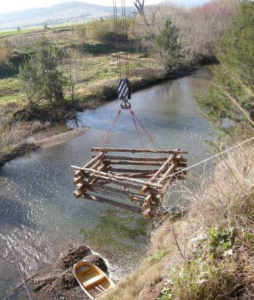With all this wet weather recently, it’s a great time to talk about Wetlands! Some of you went along to the Wetlands Forum in Moruya last month, organised by the South Coast Wetland Carers Network and have sent in comments about presentations you liked. Here are a couple of your highlights from the day.
Neil Saintilan is a research scientist who has spent more than 20 years exploring the ecology of coastal wetlands, including mangroves and saltmarshes. At the wetlands forum he talked about Blue Carbon and wetlands. Blue Carbon is a term used to describe the carbon sequestered by marine, coastal and estuarine ecosystems. Mangroves, saltmarshes and seagrasses fix carbon from the atmosphere and ocean and estuarine waters, and preserve this carbon with remarkable efficiency in deep, organic-rich sediments.
They are among the most efficient ecosystems globally in burying carbon, because methane emissions are dramatically reduced in saline environments, and tidal wetlands are conducive to long-term carbon retention.
The development of markets for the purchase of carbon offsets has the potential to provide new impetus to conservation and restoration initiatives in these vulnerable ecosystems.
He also spoke about the importance of saltmarsh for fish and migratory birds and said that it is at risk due to coastal development, sea level rise and mangrove invasion. Mangroves are tropical and respond to increasing levels of CO2, so are moving polewards and replacing saltmarsh. He has suggested that we need to plan to accommodate sea-level rise by setting aside land into which coastal wetlands can migrate.
Scott Nichols, Habitat Facilitation Officer from the NSW Department of Primary Industries said that 97% of NSW waterways have been modified and there are over 5,000 structures in NSW, such as roads and weirs, which create barriers to fish passage. He talked about some of the major threats to fish habitat and what is being done to improve it.
With all the waterways and wetlands in our region there are some great opportunities including:
- removal or modification of barriers to fish passage
- rehabilitation of riparian lands (river banks, wetlands, mangrove forests, saltmarsh)
- re-snagging waterways with timber structure
- removal of exotic vegetation from waterways
- bank stabilisation works
- reinstatement of natural flow regimes
Scott said that Habitat Action Grants are now open to help people undertake projects like these. Applications close 16 October 2015. These come from funds raised through NSW fishing licence fees. Scott and his unit are there to provide support and advice on (02) 66261396 or scott.nichols@dpi.nsw.gov.au. For more information about Habitat Action Grants, visit the website.
Paul Martin from Eurobodalla Shire Council covered the ins and outs of controlling or eradicating weeds in a wetland and provided local examples. He gave a wonderful, eel’s eye view of travelling up Tomaga River.
People also loved hearing about and seeing the rehabilitation work and midden protection being carried out by Mogo Local Aboriginal Land Council people on their land along the Tomaga River.
The South East Wetland Carers Network is now being coordinated by Michael Andrews and will be holding workshops on managing wetlands over the coming year. If you’d like to join the contact list to stay in touch with what is on locally in the world of wetlands, email Michael on mandrews@conservationvolunteers.com.au






